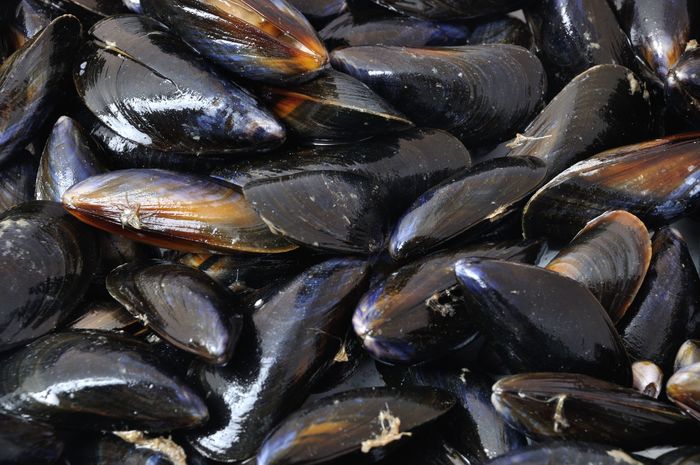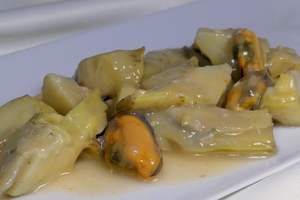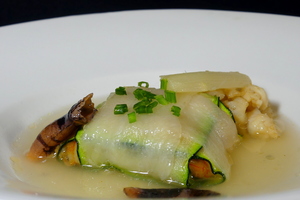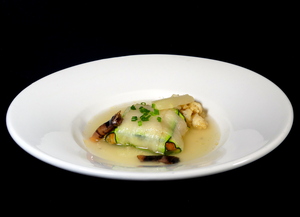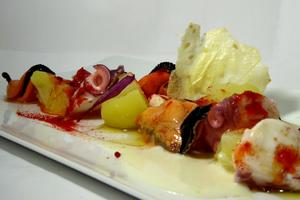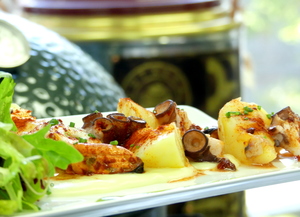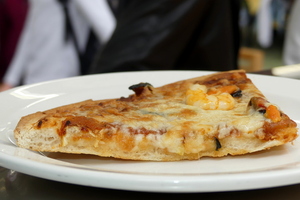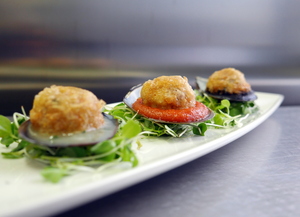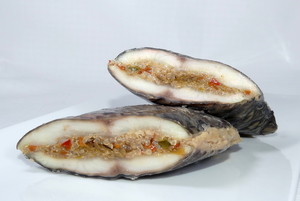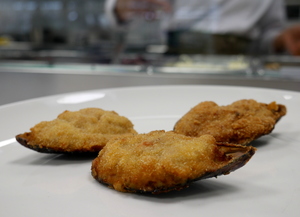Mussel
Category
Seafood
Seasonal period:
January, February, March, April, September, October, November, December
Allergens
It’s a bivalve mollusc.
It lives in sea zones with a depth from 0 to 10 meters, generally in wave-washed rocks. It lives fixed to rocks thanks to some strands it has. They must always be cleansed as they can carry illnesses like typhus or hepatitis.
They are usually sold farmed and alive, canned or frozen.
Nutritional information (0.1 kg)
Energy
68.0
kcal
Carbohydrates
1.9
g
Proteins
10.8
g
Lipids
2.0
g
Sugars
0.0
g
Salt (Sodium)
210.0
mg
Folic acid
27.0
ug
Vitamin C
0.0
g
Vitamin A
0.0
ug
Zinc
3.8
mg
Iron
4.5
mg
Calcium
80.0
mg
Cholesterol
100.0
mg
Polyunsaturated fatty acids
0.7
g
Monounsaturated fatty acids
0.3
g
Saturates
0.4
g
Fiber
0.0
g
The data is merely a guide and should not be used for medical purposes. Those responsible for the web disclaims any responsibility.
Recipes
-
Type of dish
- Beers
- Cocktails
- Breakfasts and brunch
- Burguers
- Juices, milkshakes and beverages
- Shellfish
- Bread and pastries
- Pizzas, patty
- Dessert
- Pasta
- Sándwich
- Pastries
- Finger foods
- Ice creams and sorbets
- Legumes
- Salads
- Eggs
- Patty
- liqueur
- Harvard plate
- Main course
- Meats
- Fish
- Birds
- Vegetables
- Soups and creams
- Rices
- Coffee, chocolate and infusion
- Cheeses
- Appetizers and canapes
- Temperature
- Cuisine type
- Additional culinary preparation
- Conservation technique
- Seasonal recipes
-
- Aromatic herbs
- Beverages
- Big game hunt
- Bread and pastries
- Canned goods and pickles
- Cereals
- Condiments, spices and additives
- Cooked, salted, preserved and cold meats
- Dried fruits and nuts
- Dry pulses
- Edible oils and vinegars
- Eggs and derivatives
- Feathered game hunt
- Fish cuts
- Fishes
- Insects
- Kitchen and bakery tecniques
- Kitchen and bakery utensils
- Meat cuts
- Meats
- Milk, cream and derivatives
- Mushrooms
- Offal
- Pasta, rice, flour and derivatives
- Poultry
- Seafood
- Service techniques
- Service utensils
- Vegetables cuts
- Vegetables, fruits, tubers and seaweed

